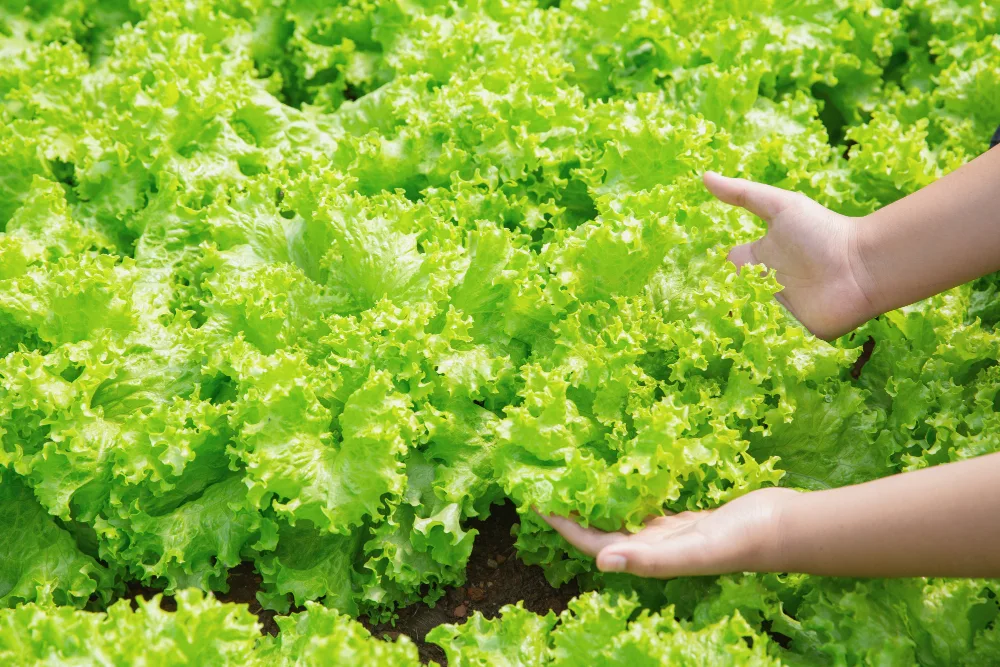Few crops offer the instant gratification, flavor diversity, and nutritional punch of salad greens. Whether you love the peppery bite of arugula, the mild crunch of butterhead, or the complex bitterness of radicchio, Growing Salad Greens at home lets you create bespoke mixes that cater to every palate. This guide will walk you through choosing varieties, sowing seeds, managing successions, and blending flavors—from bold and bitter to delicate and sweet. We’ll also link out to helpful resources, including advanced techniques in The Year-Round Vegetable Garden for Beginners.
Why Grow Your Own Greens?
- Freshness and Flavor: Home‑grown leaves go from garden to plate within minutes, retaining crisp texture and vibrant taste.
- Cost Savings: Frequent salad eaters can slash grocery bills by harvesting greens year‑round.
- Nutrient Density: Young leaves are rich in vitamins A, C, and K, plus essential minerals.
- Customization: Mix and match bitter, sweet, and spicy varieties to craft unique blends.
For an overview of sustainable watering strategies that keep greens tender, see Efficient Watering Techniques for Sustainable Vegetable Gardening.
Sweet, Mild, and Bitter: Understanding Flavor Profiles
Sweet & Mild Choices
- Butterhead (Boston & Bibb): Soft leaves, subtle sweetness.
- Oakleaf Lettuce: Delicate lobed leaves with gentle flavor.
- Mâche (Corn Salad): Nutty undertones, excellent for winter harvests.
Balanced & Nutty
- Romaine: Crunchy midrib and mild bitterness—great backbone for Caesar salad.
- Leaf Lettuce (Red & Green): Fast‑growing, makes colorful mixes.
Bold & Bitter
- Arugula (Rocket): Peppery zing that intensifies with heat.
- Endive & Escarole: Curly or broad leaves, pleasantly bitter.
- Radicchio & Treviso: Striking red hues with deep bitter notes.
To explore unconventional edibles that add color and bite, read Exploring Rare Vegetable Varieties.
Site Selection and Soil
Greens prefer loose, fertile soil with a pH between 6.0 and 7.0.
- Sunlight: 4–6 hours of sun promotes growth without excessive heat stress.
- Drainage: Raised rows or beds improve drainage—learn how in Raised Row Gardening.
- Soil Boost: Work in 2 inches of finished compost; side‑dress fast crops with compost tea.
For a deep dive into microbiology and nutrient cycling, consult The Science of Soil.
Sowing Seeds: Timing and Technique
Direct Seeding
- Cool‑Season Planting: Sow 2–4 weeks before last frost; repeat every 2–3 weeks for succession.
- Row Spacing: Broadcast for baby‑leaf harvest or space rows 6 inches apart for heads.
- Seed Depth: ¼ inch; keep soil consistently moist until emergence.
Indoor Starts
Head lettuces and specialty chicories often benefit from transplanting.
- Start seeds in plug trays 3–4 weeks ahead.
- Harden off for a week before planting.
For gentle seedling handling without tilling, explore No-Dig Gardening.
Succession Planting for Continuous Harvest
Greens mature quickly—some within 25 days. Stagger sowings to avoid a glut.
| Week | Task |
|---|---|
| 0 | Direct‑seed arugula & lettuce mix |
| 2 | Transplant romaine seedlings |
| 4 | Sow endive & radicchio |
| 6 | Resow arugula for baby leaves |
Rotate planting zones to prevent soil nutrient depletion; see The Essential Guide to Crop Rotation.
Watering, Mulching, and Temperature Control
- Consistent Moisture: Irregular watering causes bitterness and bolting.
- Mulch: Apply straw or shredded leaves to cool soil and deter weeds.
- Shade Cloth: In hot climates, 30 % shade fabric reduces leaf scorch.
For container growers, self‑watering planters keep moisture steady and roots cool.
Pest and Disease Management
Common foes include aphids, slugs, and downy mildew.
- Aphid Control: Blast with water or introduce ladybugs.
- Slug Defense: Copper tape around containers; beer traps in the garden.
- Disease Prevention: Water at soil level; provide airflow with adequate spacing.
If outbreaks occur, consult Eco-Friendly Pest Control for organic remedies.
Harvest Techniques: Baby Leaf to Full Head
- Cut‑and‑Come‑Again: Trim leaves 1 inch above the crown; regrowth in 10–14 days.
- Thinning Harvest: Pull crowded seedlings early for tender micro‑greens.
- Full Heads: Uproot mature lettuce or chicory when firm and full.
Morning harvest yields crispest leaves; rinse in cool water and spin dry.
Flavor Pairing: Crafting the Ultimate Salad Mix
- Base (40 %): Sweet butterhead or oakleaf.
- Crunch (30 %): Romaine ribs or baby bok choy stems.
- Zing (20 %): Young mustard greens or arugula.
- Bitters (10 %): Frisée or radicchio for contrast.
Top with edible flowers like nasturtium for color and mild spice.
Year‑Round Greens: Extending the Season
- Spring & Fall: Use low tunnels or cold frames.
- Winter: Grow cold‑tolerant mâche and spinach under row cover—details in Growing Under Cover.
- Summer: Plant heat‑resistant varieties like ‘Jericho’ romaine; provide afternoon shade.
Post‑Harvest Storage and Preservation
- Refrigeration: Store washed greens in breathable containers lined with paper towel.
- Hydro‑Cooling: Dunk freshly cut heads in ice water to remove field heat.
- Fermentation: Wild‑ferment spicy mustard greens for a probiotic kick.
Common Challenges & Quick Fixes
| Problem | Cause | Solution |
| Bolting | Heat or stress | Plant heat‑tolerant varieties; use shade cloth |
| Bitter flavor | High temps, water stress | Harvest early; increase irrigation |
| Yellow leaves | Nitrogen deficiency | Side‑dress with compost tea |
Bringing It All Together
Mastering Growing Salad Greens empowers you to tailor flavors—from delicate sweet leaves to assertively bitter chicories—based on your personal preferences. By focusing on succession planting, balanced watering, and organic pest control, you can harvest vibrant salads nearly every week of the year.
When you’re ready to push boundaries, consult The Year-Round Vegetable Garden for Beginners for advanced strategies like hydroponic salad tables, soil‑block propagation, and custom nutrient solutions. With a bit of planning and experimentation, your garden (or balcony) will become a living salad bar—fresh, flavorful, and endlessly diverse.


Leave a Reply